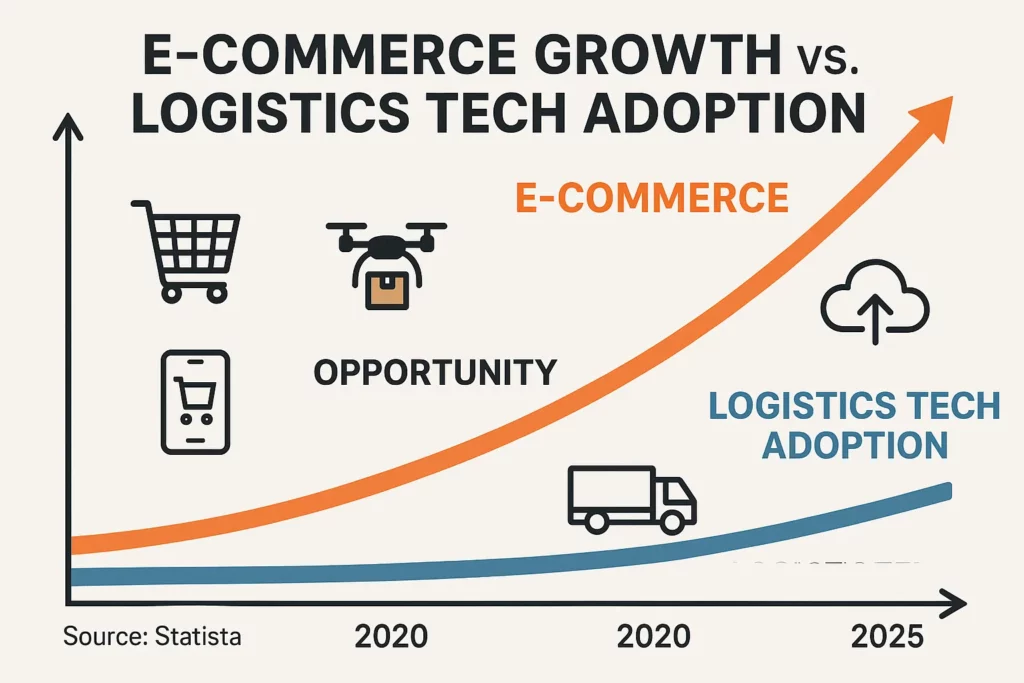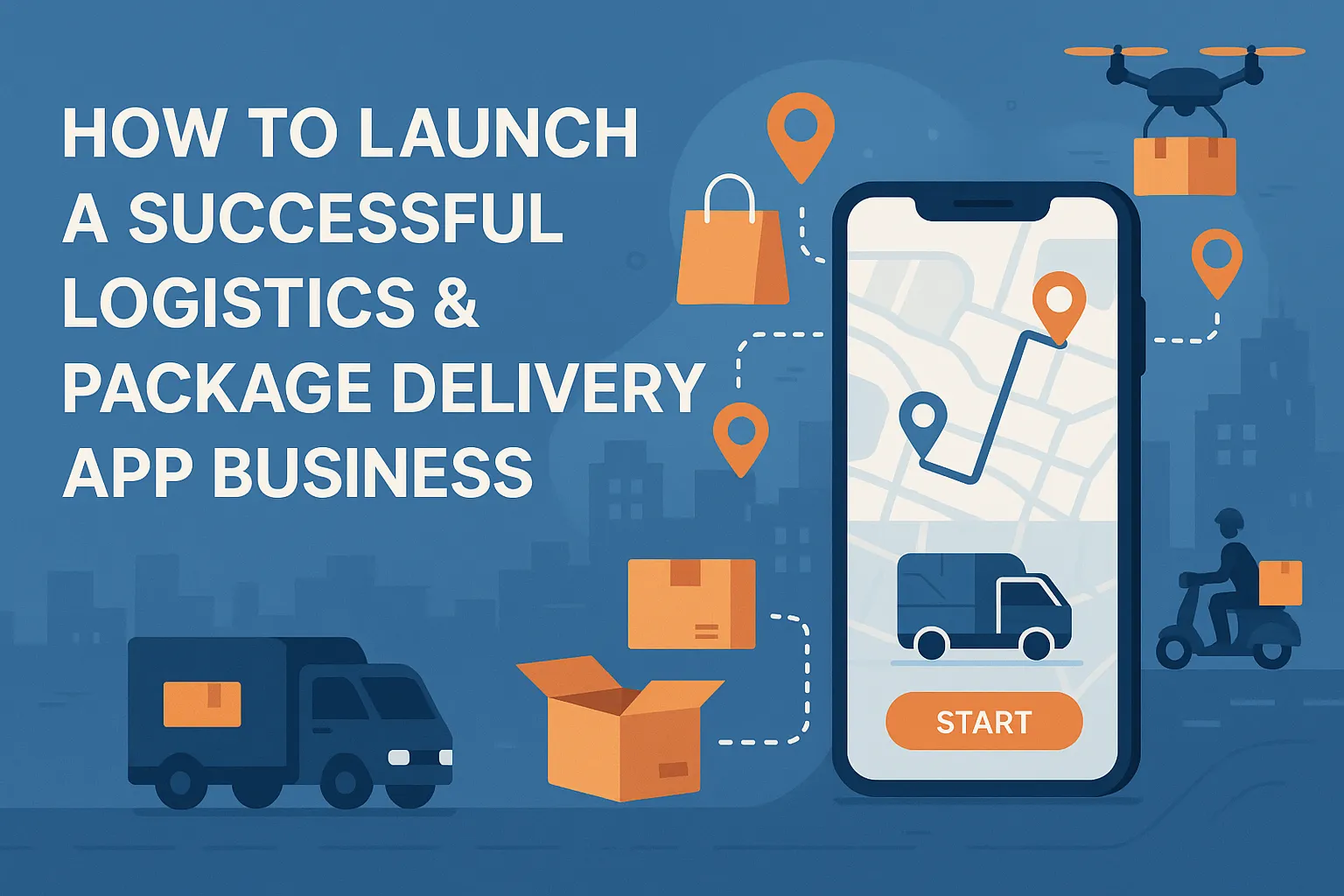Remember the last time you tracked a package and saw it make its way through cities, warehouses, and finally, to your doorstep? That magical real-time trail isn’t magic. It’s tech. And behind it lies a booming industry powered by logistics apps. If you’re an entrepreneur or founder eyeing this space, you’re not late to the party. In fact, you’re right on time.
With consumer expectations leaning towards instant gratification and same-day delivery becoming the new norm, logistics and delivery apps are thriving. Whether it’s moving a sofa across town or getting groceries within an hour, people crave convenience. And where there’s craving, there’s opportunity.
This blog is your GPS for navigating the road to building a profitable delivery app business. We’ll dissect what makes logistics apps like FedEx and DHL tick, how regional players are cashing in, and where you can carve your niche. Oh, and if you decide to launch your own clone app? Miracuves has your back.
Why Logistics Apps Are Booming in 2025
Global e-commerce sales are projected to reach $8.1 trillion by 2026, and all those orders? They need to be shipped, tracked, and delivered. Apps are the connective tissue between warehouses, fleets, customers, and businesses.
But it’s not just about packages. Logistics apps are solving real-world problems:
- Delays in traditional courier systems
- Lack of real-time tracking
- Mismanagement of last-mile delivery

Key Features That Power Winning Delivery Apps
Before you get into coding or cloning, here are the essentials that your logistics app must absolutely nail:
1. Real-Time GPS Tracking
Users want to know exactly where their parcel is. Think Uber, but for packages.
2. Multi-User Roles
Separate interfaces for sender, delivery agent, admin, and receiver.
3. Route Optimization
This helps delivery agents reduce fuel costs and time.
4. In-App Notifications & Chat
Instant updates and direct communication.
5. Payment Gateways & COD Options
Let users choose how they want to pay—digital or old-school.
Popular Logistics & Package Delivery Platforms (And What You Can Learn from Them)
Let’s take a quick world tour of the titans of delivery and what they did right:
FedEx
The OG of logistics. Their app offers seamless tracking, rate calculators, and barcode scanning. Lesson? Simplicity + Trust.
DHL
Europe’s darling. Known for lightning-fast international delivery and eco-conscious logistics.
UPS
Their strength lies in deep B2B integrations and inventory control systems.
Delhivery (India)
Built for scale. API integrations, warehouse management, and AI-powered logistics.
Lalamove
This hyperlocal hero shines in same-day deliveries, fleet management, and citywide coverage.
Shiprocket
DTC and SMBs love them. They offer easy plug-and-play delivery for Shopify, WooCommerce, etc.
Ninja Van
Dominating Southeast Asia with real-time updates and an agent-friendly experience.
Blueprint for Launching Your Logistics App Business
Alright, time to roll up those sleeves. Here’s your 5-step roadmap:
Step 1: Identify Your Niche
B2B? B2C? Grocery delivery? Furniture movers? Choose your battleground.
Step 2: Build or Clone a Robust App
You could start from scratch or speed things up with a customizable clone from Miracuves. Less time to market, fewer bugs.
Step 3: Fleet & Partner Onboarding
Start small. Local delivery agents or third-party logistics can do the trick early on.
Step 4: Launch in a Focused Region
Avoid the temptation to go national on Day 1. Dominate your city first.
Step 5: Monetization & Scaling
Use:
- Delivery fees
- Subscription models for vendors
- Priority shipping charges
Monetization Models That Work
₹ Per Delivery Commission
Charge a small fee per order. Volume makes it lucrative.
✔ Freemium + Premium
Let users send a few parcels for free, then upsell to subscription plans.
Surge Pricing
Just like rideshare apps, charge more during peak hours or bad weather.
Common Pitfalls to Avoid
- Ignoring local compliance and delivery laws
- Overengineering: Users want function, not fluff
- Bad UX: One failed delivery = lost trust
Tech Stack & Tools
- Frontend: Flutter, React Native
- Backend: Node.js, Laravel, Firebase
- APIs: Google Maps, Twilio, Razorpay
- Admin Panel: Custom dashboard for analytics and agent tracking
Conclusion
The logistics game has evolved far beyond just warehouses and delivery trucks. Today, it’s driven by intelligent software, real-time tracking, and user-first design. Entrepreneurs who tap into this digital momentum are the ones who’ll lead the next wave of innovation.
At Miracuves, we empower creators and startups to launch powerful, ready-to-scale app clones tailored for the logistics world. If you’re dreaming of building the next delivery tech giant — let’s make it happen, together.
FAQs
Q1. How much does it cost to build a logistics app?
You can build a complete logistics app with Miracuves for $2K to $5K using a ready-made clone solution, delivered within 3–6 days including setup and deployment.
Q2. Is it better to clone or build from scratch?
Cloning saves time and money. It also reduces errors and lets you hit the market faster.
Q3. Can I launch in just one city?
Yes! In fact, it’s a smart move to dominate one area before expanding.
Q4. Do I need my own delivery fleet?
Not always. You can start by partnering with third-party fleets or freelance drivers.
Q5. How do these apps make money?
From delivery fees, subscription plans, priority deliveries, and vendor commissions.
Q6. How long does it take to launch?
With Miracuves, you can launch your complete app in just 3–6 days, including setup, customization, and full deployment.








